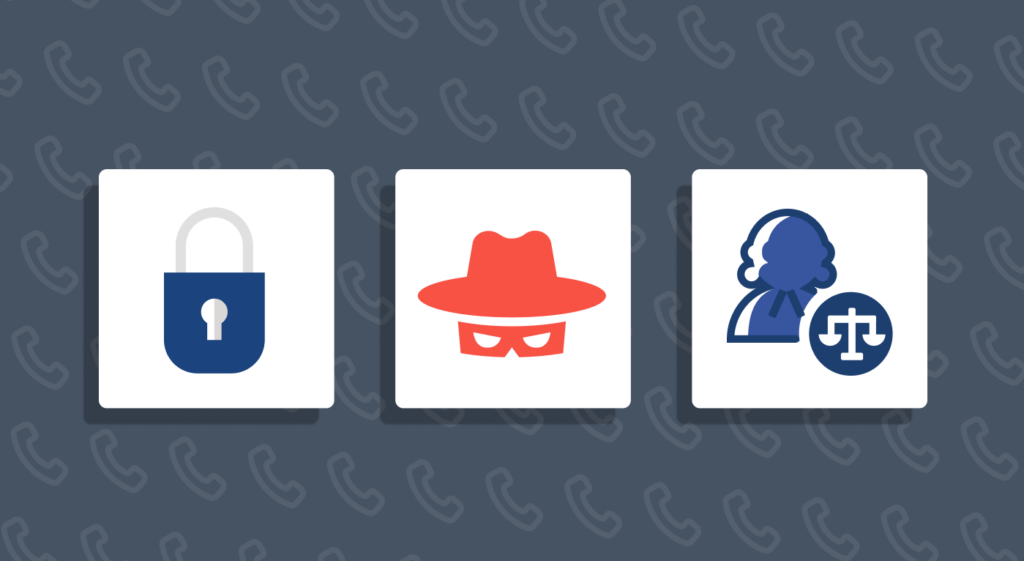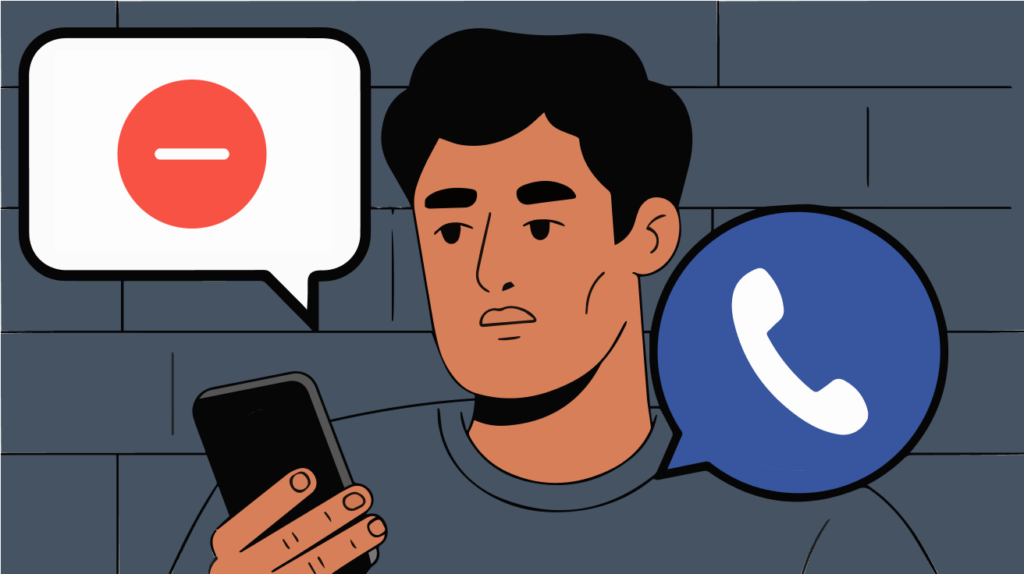Whenever your phone rings, you see the number of the person calling from the other side. However, sometimes your mobile doesn’t display the person’s name and number. Instead, you will see an “Unknown Caller” or “No Caller ID” message. While it is easy to confuse them, these terms represent different situations.
As such, it is important to know how to identify and manage them to ensure your safety and privacy. Follow us closely as we unbundle how “No Caller ID” differs from “Unknown Caller” phone calls. We will also show you how to protect yourself from unwanted calls.
What Does “Unknown Caller” Mean?

An “Unknown Caller” response comes up when you receive a call where the dialer’s information is not detected or displayed by your phone. These details can include their name or phone number. This can happen due to temporary network issues affecting the transmission of their information. Or it may be that your phone is using an outdated technology that cannot process incoming caller ID.
Calls from international numbers also appear this way if your local provider cannot tell where they are coming from. Additionally, phone rings from an unlisted number will be flagged as “Unknown.”
Although your device might not display it, the numbers in this situation actually exist. Indeed, the ring might not be malicious. Yet, there is the natural reluctance that comes with picking a number with no ID, or that looks strange to you.
What Does “No Caller ID” Mean?
“No Caller ID,” otherwise known as “Private Number,” shows up when the dialer is intentionally preventing their contact from showing. They can achieve it by either dialing a blocking code (e.g., *67 in the U.S.) before buzzing you or using a third-party app to mask their ID.
Some other people can decide to block their contact from appearing when they make calls, usually for privacy or security reasons. While a number tagged with “Private Number” can be legitimate, you have to be cautious because it can also be spam or a scam.
Who Makes Use of “No Caller ID?”

There are various reasons someone might deliberately take steps to hide their identity. Some are for fair causes; others can have malicious intent.
Let us examine the possible scenarios below:
- Individuals protecting their privacy: Some people are generally skeptical about sharing their contact details. For example, a high-profile person like a celebrity or someone who wants to share sensitive information anonymously might use this feature. By doing so, they ensure that their number is not saved or shared.
- Service providers: Survey companies or the customer service department of some businesses can mask their ID to protect their lines. They often use a centralized dialing system in place of individual phone lines. Since a potential callback might not directly lead customers back to the relevant department, it is best to hide their numbers altogether.
- Scammers: While using a private number could be legitimate, scammers have sadly taken advantage of the feature. They use it to hide their contact so that their potential victim cannot recognize or block the calls. Also, they can conceal their numbers and impersonate legitimate businesses to increase the chances of someone falling for their lies.
- Law enforcement agencies: Sometimes, law enforcement agencies use private contact to protect the identity of their officials. This can happen during undercover operations and sensitive investigations. Although it is not a common occurrence, it is possible in certain situations.
- Friends and family trying to tease you: On a lighter note, your friend or family members may hide their number to surprise or prank you. For example, they can buzz you anonymously and make you guess who they are. While this is usually done in good spirits, it could still be alarming, especially if you were not expecting it.
“Unknown Caller” and “No Caller ID”: What’s the Difference?
While these types of calls do not display a dialer’s ID, they are different. Let’s highlight these differences so you know how to handle them better.
| Unknown Caller | No Caller ID | |
|---|---|---|
| Caller’s control | They didn’t choose to hide their information. | They are intentionally withholding their identity. |
| Caller’s intent | Mostly legitimate. | Potentially malicious. |
| Cause | It’s often because of technical issues, network inconsistencies, or an incompatible phone that cannot display ID information. | This is deliberately done either for privacy reasons or malicious purposes like telemarketing or scamming. |
| Most common scenarios | It happens when you are receiving a call from a different network or country. | Usually, it is from a business or person trying to achieve personal privacy. |
| Usage | It’s a consequence of network-related challenges. | Often used to provide privacy and anonymity. |
| Recipient’s action | It is worth answering, especially when you are expecting a call from someone or an organization whose contact is not saved on your phone. | You should avoid these numbers or use screening apps to filter them out. |
How to Identify a “No Caller ID” and an “Unknown Caller”?

Unmasking a “Private Number” or “Unknown Caller” could be difficult. However, by employing the strategies below, you can know the identity of the caller.
- Use *69 to know the last call: Dialing *69 can show you the number of the person who buzzed you last, even if the call came in as a private contact. However, this feature is not available on every device as its availability depends largely on your network provider.
- Ask your service provider for your call history: If the option mentioned above does not work, you can directly reach out to your mobile carrier. This is because they usually have access to call detail records (CDRs). As such, they can see incoming and outgoing numbers, even if they are hidden. But similar to our first method, you can only access it if it is an available service.
- Use caller ID apps: Applications like Truecaller, Hiya, and CallApp are designed to identify unknown buzzers. With them, you have a higher chance of identifying someone who is trying to stay anonymous. Truecaller works by displaying a contact alongside its associated details so you can recognize potential scammers. Hiya, on the other hand, identifies hidden numbers and blocks spam rings. Its database is regularly updated with reported spam, which makes it easy to differentiate a legitimate contact from a known malicious one. CallApp provides detailed information about contacts and their identities.
- Report suspicious dials: If you receive a call that you suspect is from a scammer or telemarketer, it is important to take safety action. You can report the number to organizations like the Federal Trade Commission (FTC) in the United States. These institutions are committed to collecting and investigating deceptive and harassing phone dials. By reporting them, you are protecting yourself while contributing to the broader effort of identifying and eliminating fraud.
How Can I Block these Calls?

Receiving unknown and unwanted rings can be quite frustrating, especially if they are interrupting your day. Thankfully, most smartphones and network providers have one feature/mechanism or the other to block these ringers. Check out how to do so on different devices below:
Blocking Private Numbers on iPhone
If you are an iPhone user, you can block numbers (even without a proper ID) using the “Silence Unknown Callers” feature. To do this, you’ve to go to your phone’s settings, then “Apps,” and select the “Phone” app from there. Now, scroll down till you see the “Silence Unknown Callers” option. Click on it and toggle it on.
After enabling this option, your device will silence calls from numbers not present in your contacts, messages, and emails. These buzzers will automatically be redirected to your voicemail without your device ringing. However, consider it wisely, since while this method works well, it is possible that you can miss out some of your important calls.
Blocking Private Numbers on Android
On most recent Android phones, you can block calls from Private numbers by going to your phone’s settings, selecting “Blocked Numbers,” and turning it on.
By doing so, dials without a proper number will be automatically filtered out. However, it doesn’t bar numbers you’ve not yet saved. This means that there is a lower chance of missing legitimate calls.
How to Control Anonymous Calls

Let’s face it: Answering numerous anonymous calls opens up the possibility of you being exposed to scams. Hence, it’s better that you implement certain security measures to protect yourself by reducing the number of unwanted calls. These include:
- Use call-blocking apps: You can use third-party call-barring apps (like Truecaller, Hiya, and RoboKiller) to get rid of unwanted calls. These applications have a global database to identify callers and automatically bar numbers without ID or those flagged as suspicious.
- Contact your carrier: Many mobile carriers have built-in services that block and manage unknown calls. For example, AT&T has Call Protect, Verizon has a Call Filter, and T-Mobile has Scam Shield to identify and bar scam calls. You can call your carrier to make inquiries about these services. While most of them are free, others might require an affordable monthly fee from you.
- Use voicemail: If some calls still slip through the methods mentioned above, you can let private calls go straight to voicemail. Most anonymous dialers won’t leave a voicemail. And even if they leave one, you can listen later to carefully judge whether it’s important or not. To make this tip more effective, set your phone to ring for your saved contacts. You can also customize a voicemail that will discourage spammers while encouraging legitimate dialers to leave a message.
- Enable DND settings: Most smartphones provide the Do Not Disturb (DND) option that you can use. You can also customize your DND to block numbers not found on your contact or recent call list. To enable DND on your iPhone, go to Settings > Focus > Do Not Disturb. You can then set it to only allow rings from your contacts. On Android, go to Settings > Sound & Vibration > Do Not Disturb, and customize your settings to bar unknown numbers.
- Enable spam blocking on your phone: Most smartphones have custom features that bar unwanted calls. Go to your Settings to find this option and enable it. You can also set up filters that identify and reject potential spam.
